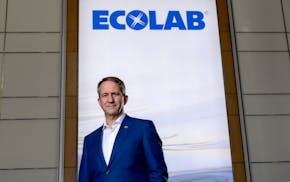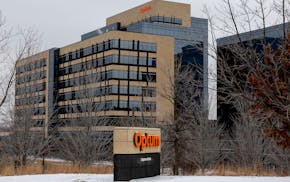In the past decade, Amazon said it has invested more than $3 billion in Minnesota and employs 6,500 in full- and part-time jobs.
The internet giant's physical footprint has grown tremendously since it opened its massive fulfillment center in Shakopee five years ago. It now has three fulfillment and sortation centers, a Prime Now fulfillment center for its two-hour delivery service, three delivery stations, seven Whole Foods Market grocery stores, an Amazon 4-star store at the Mall of America, a tech center in the North Loop and other support facilities.
The company said between infrastructure and employee compensation, it has spent $3.3 billion in Minnesota from 2010 to 2020. It also says its facilities have created 9,000 jobs for other entities that serve them.
"Delivering for our customers, creating good jobs and the generation of economic opportunity is always at the forefront of our investing strategy," said Holly Sullivan, vice president of economic development at Amazon, in a statement. "We are proud to be the No. 1 investor and fastest job creator in America and we know that our size and scale bring broader responsibility — our investments cannot only help revitalize cities and neighborhoods but also provide a career opportunity for those in need."
Amazon began to offer starting wages of $15 per hour for all of its U.S. workers in 2018, earlier than a lot of other major retailers raised their pay. Still, local workers groups have pushed for better working conditions including raising concerns about the speed employees must work and the danger of injuries.
Employees, similar to those across the retail industry, also have had to deal with the added risks of contracting the coronavirus. Last October, Amazon reported that nearly 32 out of every 1,000 Amazon workers in Minnesota had tested positive or been presumed positive for COVID-19, the highest rate out of any state. There hasn't been an update on case rates. Amazon has provided on-site vaccination events at hundreds of its locations.
For its second quarter that Amazon reported in July, net sales were $113 billion, a year-over-year increase of 27%, but revenue still failed to meet analyst expectations as sales growth began to slow in comparison to during the peak of the pandemic when so many more consumers were relying on Amazon as they were stuck at home due to COVID-19 restrictions.
With restrictions beginning to lift at the beginning of this summer and more people venturing out to stores and other activities outside of shopping, Amazon, like other companies that saw record revenues during the pandemic such as Minneapolis-based Target, face diminished growth numbers when put up against quarters where it overperformed during the pandemic.
Amazon has continued to double down on its physical footprint, expanding its stores and space for sorting and delivery. Early this year, the company reported that it had added buildings in its fulfillment and logistics network with square footage growing about 50% in 2020, many of them becoming operable in the fourth quarter. Company executives have said that infrastructure investments will continue.
In Minnesota, Amazon has a new distribution center that is slated to open later this year in St. Cloud and a fulfillment center to open later this month or early September in Lakeville. An Amazon 4-star store is also planned for Rosedale Center in Roseville.

As profits rise, U.S. Bancorp remains vigilant for looming economic uncertainty
Union health care workers in Rochester get big wage wins, limits on overtime

Ecolab adding 5% trade surcharge to offset tariff costs
![The Ear of Corn Water Tower, Tuesday, Feb. 1, 2022, Rochester, Minn. ] GLEN STUBBE • glen.stubbe@startribune.com](https://arc.stimg.co/startribunemedia/LM3OIIL5TEGRYOK3Z7BKT3J63A.jpg?h=91&w=145&fit=crop&bg=999&crop=faces)
Aw, shucks: Olmsted County shoots down two more Ear of Corn tower site proposals

